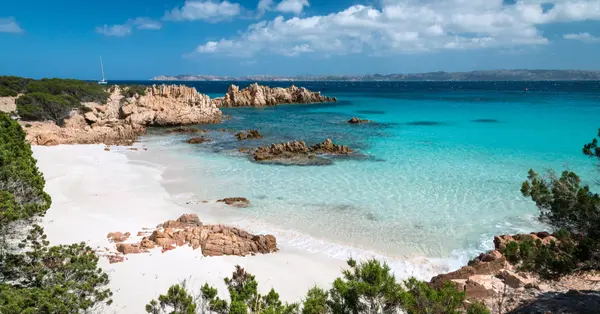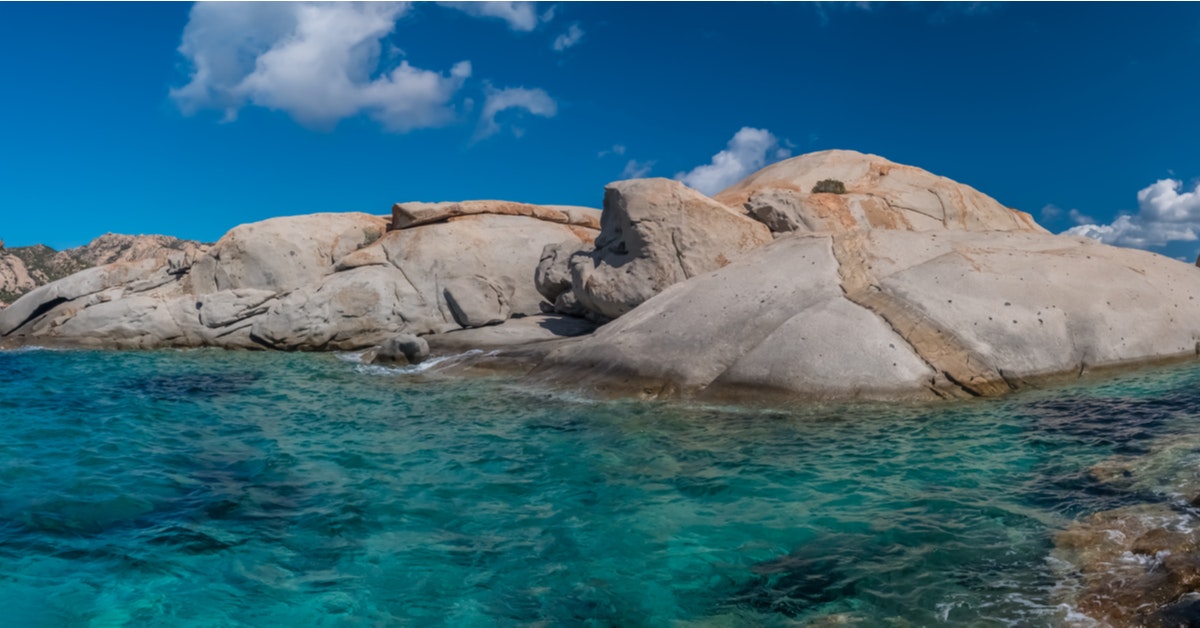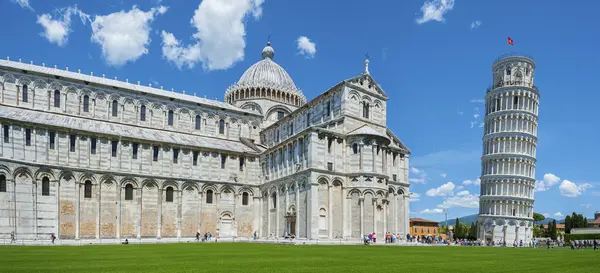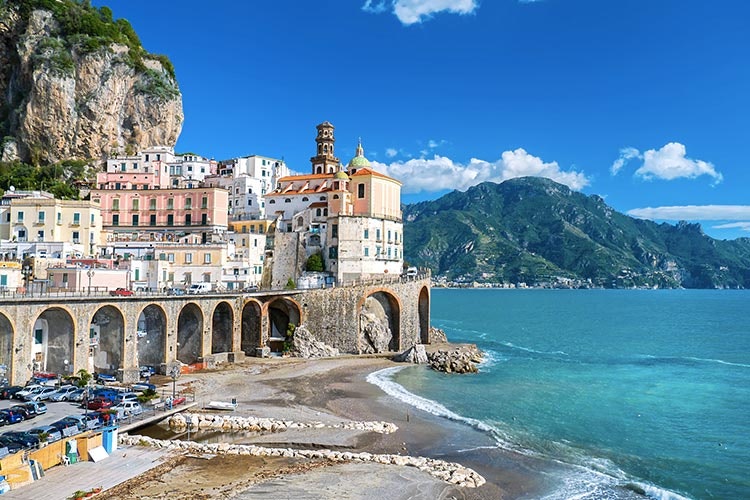The yachting°com Sailing Guide to Italy
Why sail in Italy?
Why sail to Italy?
- Variety of sailing locations - for beginners and adrenaline junkies alikeDiverse
- coastline, beautiful covesand deserted islands
- sandy beaches that rival
- those of the Caribbean, and wild, steeppicturesque
- medieval villages with enchanting harboursmany
- monuments - the mysterious Sardinian nurages or the original
- Roman amphitheatreslocal
- cuisine made with the finest and freshest local ingredients
Need help choosing a boat or route? Do not hesitate to contact me.
International Numbers:
UK: +44 208 08 98 515
DE: +49 211 54 69 22 23
CZ: +420 222 528 222
RU: +7 499 609 4515
SK: +421 232 195 340
Leave your contact details below:
.jpg)
guide to sailing regions in ItalyCompared
toCroatia, sailing here is more varied and offers more sailing experiences. From the usually calm waters of the Tuscan islands, to the incredible sailing paradise of northern Sardinia, to the Aeolian Islands, where you'll find all three of Italy's active volcanoes in a relatively small area. A cruise on the Venetian Lagoon offers a combination of historical exploration and gourmet experiences, as do the Pontine Islands and the Cilento Coast.
SardiniaThe region of
Sardinia is so vast and rich that you can't get to know it in one fortnight's cruise. If you sail from northeastern Olbia, you can expect to wander the often uninhabited, wild islands of ourof La Maddalena National Park
, with its many beautiful sandy beaches and sheltered coves.From here you can cross the Strait of Bonifacio and visit the island of Corsica, with the magnificent Bonifacio
perched on a cliff high above the sea.Even on the southern coast of Sardinia you'll find a wealth of secluded coves, fjords and cosy beaches. The Costa Rei in the south-east of the island or the coast west of Cagliari are beautiful. If you want to add some fishing or diving to your cruise, anchor off the islands of Sant' Antioco San Pietro
.Sardinia's south also harbours many ancient relics of the island's colourful past. The most luxurious tourist zone in Sardinia is undoubtedly the Emerald Coast - Costa Smeralda
, located in the northeastern part of Sardinia, north of Olbia.
Tuscan Islands and the adjacent mainlandThe best
sailing spot in the area is undoubtedly Elba - Napoleon's exile, but above all a beautiful island. Here you will find many safe anchorages with sandy beaches, a cable car to the highest peak with a stunning view ofromantic medieval towns led by Portoferraio
or modern millionaire settlements where Roman Abramovich is moored.Tuscany's yachting area is bounded by the Magra River to the north and Civitavecchia to the south. It also includes the islands of Capraia - a former prison colony and now a wonderful diving spot. There are also Piatnosa, Giglio, which was infamous for the wreck of the Costa Concordia, and Montecristo, the site of theof Alexander Dumas' famous novel
, which forms part of the Parco Nazionale Arcipelago Toscano. With few exceptions, these are mountainous islands that rise sharply out of the sea, while the mainland of Tuscany is made up of fertile pastures, orchards and vineyards.It is in this picturesque area that you can enjoy the view of thesixth tower of Pisa
, which is just a short distance from the local marina, or enjoy homemade saffron ravioli in one of the authentic Tuscan restaurants..jpg)
Sicily and the Aeolian IslandsSicily
is a world unto itself. Dominated in the east by Europe's most active volcano, Mount Etna, it is separated from Italy by the Strait of Messina. This stunning island is largely covered in mountains, with the rest covered in citrus groves, vineyards and olive trees. Palermo
, from whose natural harbour you may well be sailing, will enchant you with its distinctive colour. As you sail along the northern coast, you can't miss the Appenino Siculo, a mountain range almost 2,000 metres high.From Mount Etna towards Mount Vesuvius , the volcanic belt of the Lipari archipelago is completed by the mesmerising and still active Stromboli volcano. These islands are made up of cones of active or extinct volcanoes. Apart from walking around the steaming volcanoes, bathing in the hot pools and volcanic mud is a great experience. The best ports of call on Lipari are the marinas of Porto Rosa and Milazzo, from where it is only a 3-hour sail to the island of Vulcanou. The Strait of Messina is a regulated entry and transit area, so you must contact the coastguard at Channel 10 before entering or risk a fine.
Weather in ItalyThanks to the
Alps, which act as a natural barrier to the coldThe rule in Italy is that the further south you sail, the hotter you get. Genoa in August will average 25°C, while Palermo will average 27°C. The difference in sea temperatures will be similar - 23 vs 26°C.
Occasionally in summer there are thunderstorms accompanied by wind and rising seas. Storms occur mainly off the coast, typical of the south of Sardinia, and usually last only a few hours
When you are forecasting, the following 4 names will be used in connection with the wind: Maestral, libeccio, tramontana and bora.
Maestral, so familiar from Croatian waters, blows mainly in the N-NW direction in Corsica and northern Sardinia.Less familiar to many will be the libeccio. This NW-SW wind blows mainly in the Ligurian Sea and in Corsica in the northern half of the Tyrrhenian Sea
. It normally has a strength of 5-8 Bf and brings with it rain, usually lasting 1-4 days. Those who visit the west coast of Italy in winter or autumn have a good chance of experiencing Tramontana. It often reaches gale force, especially along the mountainous coast where gusts are frequent. It is a NE wind and usually lasts 1-2 days.Hot, southerly scirocco winds are experienced mainly in the south of Sardinia, Sicily and the Italian mainland. It can also reach gale force and lasts 2-5 days. As it blows from the Sahara, you will often find particles of red sand in it. Bora can last up to 22 days and mainly affects the north of the Adriatic Sea. It is felt most in winter and blows from the north.
More sailing grounds in Italy
Pontic IslandsThe Pontic
Islands are neglected by tourists despite their attractiveness. But you can remedy this with your sailing boat and explore the cliff-lined island of Capri , whose capital in the mountains is reached by cable car from the harbour. Its beautiful caves and deserted coves are only accessible by boat. Or evergreen Ischia, with its hundreds of thermal springs and the pilgrimage church of Santa Maria del Soccorso. Another very nice island is Ponza
with its many safe and spacious anchorages and Ischia. Rome needs no introduction, but recall bustling Naples with Vesuvius and buried Pompeii suitable for a day trip. .jpg) Amalfi and CilentoAmalfi
Amalfi and CilentoAmalfi
was a powerful and famous maritime republic in the Middle Ages, only to be destroyed by an earthquake in the 14th century when most of the town fell into the sea. The whole area is characterised by mountains, charming countryside and villages built on the cliffs that line the coast. It was in the Amalfi area, from the islets of I Galli, that the sirens lured the mythical Odysseus to the cliffs with their song. The Cilento area is essentially one huge national park, dotted with wildlife and interspersed with historic villages where life is lived the old-fashioned way. The area attracts very few tourists.

South Adriatic SeaThis
part of Italy's yachting district consists of the coastline from the top of the Heel to the port town of Brindisi. Only six marinas can be found here. Like its western neighbour, this area is also excellent as a "maritime resting place". for yachts crossing the Adriatic Sea en route to Croatia, Montenegro or Greek territorial waters.
Ligurian Coast
From the border with France to the mouth of the Magra River stretches the northernmost yachting region with its centre in Genoa, Italy's largest port. Its two marinas are nicely situated right in the centre of the bustling city, but don't expect clean seas. As you set sail, the enormous peaks of the Alpine mountains will be at your back, and in the distance ahead of the bow you'll see the outline of wild Corsica in a misty haze. The Riviera di Levante, west of Genoa, offers spectacular scenery, with its picturesquecountryside mixed with beautiful medieval towns in Mediterranean pastel colours. The bay of La Spezia, with its mouth of the Magra River, is also famous for its natural beauty. The dramatic coastline of the Cinque Terre
is a delight to sail around, with five tiny, colourful villages squeezed into the high, steep cliffs.Venetian LagoonThe vast
lagoon that stretches around the capital has formed a kind of shield against invaders since the days of ancient Rome, thanks to its ruggedness. Today, you can sail around the many diverse islands where local Venetians escape from tourists for picnics. For example, the little-visited island of Sant' Erasmo
, a green market paradise known for its abundantartichokes and asparagus, or the island of Burano, where a visit to the famous glassworks can make your eating and relaxing time more enjoyable..jpg)
Ionian SeaUnless you
point your sailboat into the Gulf of Taranto and wrap the heel of an Italian shoe around it, you'll be sailing in perhaps the least explored part of Italian waters. Calabria's southern coast is lined with steep mountains and wild cliffs, while the Apulian coastline to the east is made up of sunny plains and rolling hills. But the whole of Italy's Ionian Sea has one thing in common. The area is also a very convenient stopover for crossings to Croatia, Montenegro or Greece.
Italian gastronomy
If you think you know what a real Margherita pizza tastes like, dock in Naples for a while and head to Centro Storico, where you'll be convinced otherwise. The tomatoes here come from the same volcanic soil that buried Pompeii, the local mozzarella is madeis made from buffalo milk and combined with freshly picked basil to create this most famous Neapolitan dish.

In Sicily, the locals will teach you how to taste perfectly prepared fish. Once you try the local tuna baked with salt, anchovies, and garnished with pumpkin flowers and cheese, you'll never want another. But if you do feel like cooking up something in the ship's kitchen, make a morning stop in Catania at the famous La Pescheria fish market
, where the old-timers will convince you of the merits of their catch. There's also a food market just a stone's throw away.The Italian coast and islands offer such gastronomic delights and much more. The differences in the different areas are really great, detailed information and recommendations can be found in the articles for each area.
When to sail to Italy on a boat holiday?
The best time to cruise to Italy is spring and autumn, when the sea is emptier and the sea is still warm.
Yachting infrastructure
There are probably nowhere in the world with as many marinas as Croatia, but Italy is certainly not far behind and there's no risk of having nowhere to go in bad weather. You just have to reckon that overnight rates are a bit more expensive - €100 per night for a 12m sailboat is not unusual. But it's usually no problem to anchor near the marina and take a dinghy into town. Some marinas offer free moorings for visitors -
they fill up very quickly in high season and need to be booked in advance.When to avoid Italy?
An important piece of information for every sailor is that the last week of July and the first three weeks of August are national holidays in Italy, the so-called "sailing holidays". Ferragosto and it is better to be anywhere else, especially not in Italy. If in Croatia there are 20 boats in a bay and you feel it's full, in Italy there are maybe 50 boats in a bay at ferragosto time. In the morning the bay is empty, only a few sailboats at anchor, after 10am the boats start arriving, mainly powerboats. Around 2 pm the number of boats reaches a maximum. The Italians have a picnic on the dinghy, swim a few temps and then leave again. Around 5 pm everyone weighs anchor and sails to the harbour to sit in the restaurant in the evening. The evening and night in the bay are quiet again, with only a few sailboats at anchor.
Contact yachting°com today about your next sailing holiday in Italy or browse available yachts below.
Ask me about sailing in Italy.
Write us and we will contact you:
International Numbers:
UK: +44 208 08 98 515
DE: +49 211 54 69 22 23
CZ: +420 222 528 222
RU: +7 499 609 4515
SK: +421 232 195 340
